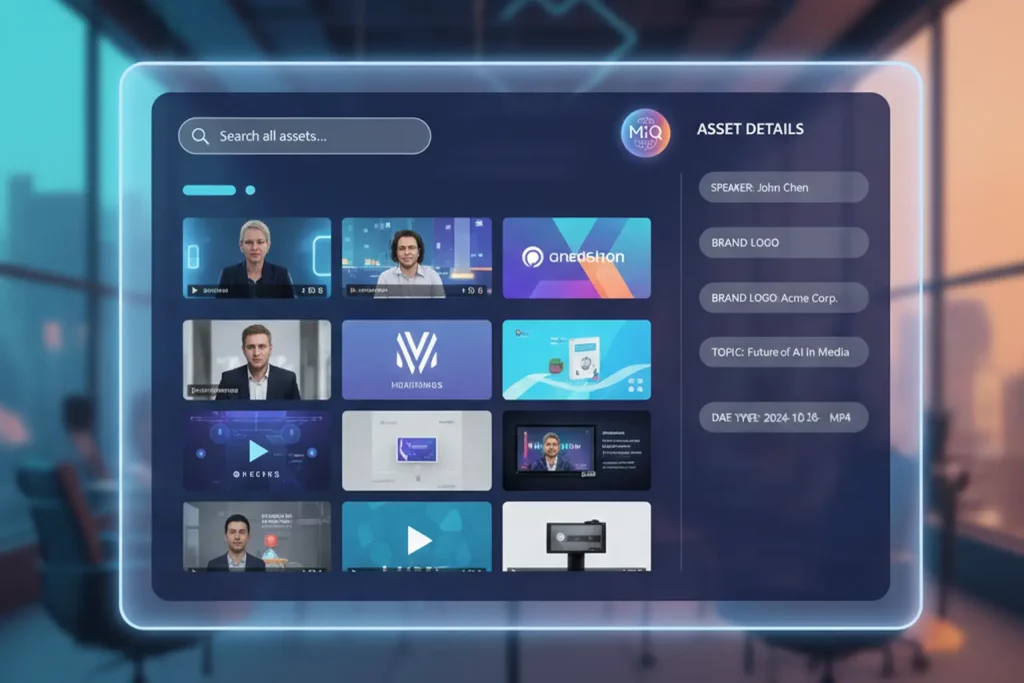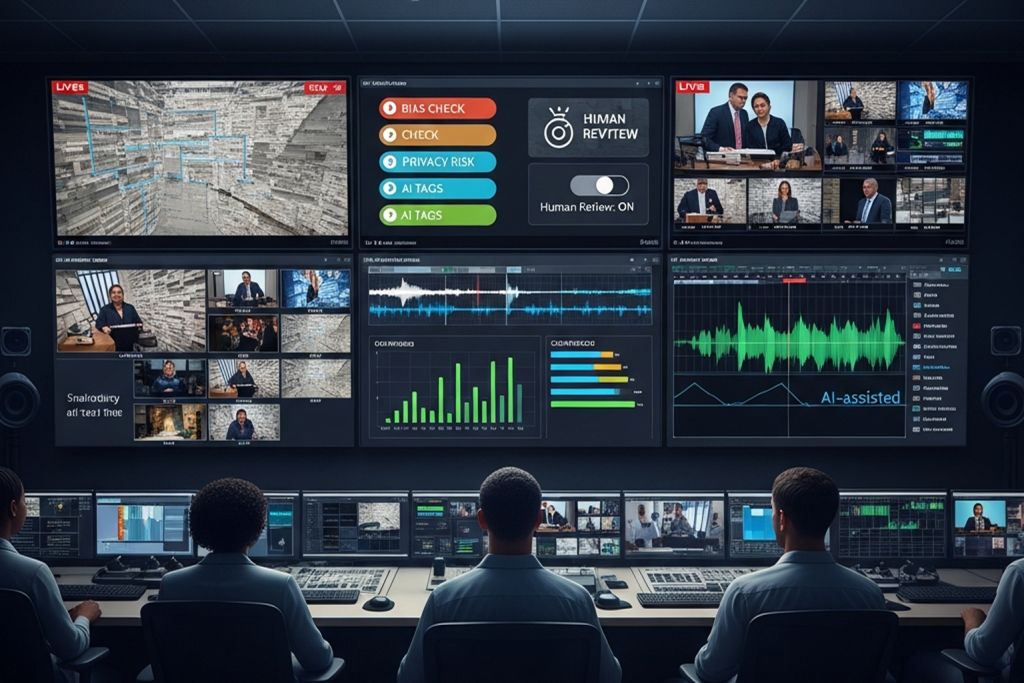Automated ad detection stands as a crucial element in modern broadcast and digital media operations. It ensures that every commercial gets recognized, recorded, and analyzed for compliance and monetization. This dynamic process elevates a station’s ability to prove ad delivery, remain within regulations, and gather real-time data that improves future media buys. Automated ad detection operates at scale, eliminating the need for manual monitoring teams to watch countless hours of content. By recognizing audio and video signals, the system tracks exact ad air times, brand details, and compliance parameters.
Introduction to Automated Ad Detection
The broadcast and streaming industry runs on precise schedules and tight margins. An improperly aired commercial can lead to expensive make-goods, diminished advertiser satisfaction, and potential regulatory penalties. Automated ad detection solves these issues by scanning live signals, identifying paid content with accurate timestamps, and generating comprehensive logs that help sales, traffic, and compliance departments.
This method shifts the workflow from manual logging to a software-driven approach that integrates with traffic systems, content management solutions, and analytics dashboards. As the technology continues to grow, it plays a bigger role in shaping how broadcasters, publishers, and advertisers interact.
What Is Automated Ad Detection?
Automated ad detection uses specialized software to recognize, log, and confirm airing of commercials across television, radio, over-the-top (OTT), and streaming services. By leveraging audio fingerprinting, video fingerprinting, metadata parsing, and artificial intelligence, the system processes content in real time, matching each ad to a reference database.
When you integrate automated detection with your existing playout systems, you can check if an ad ran at the exact second it was scheduled. This transparency forms the backbone of ad billing, compliance reporting, and performance analytics. Many organizations are turning to Digital Nirvana’s ad detection solutions for enhanced efficiency.
Audio and Video Fingerprinting
Audio and video fingerprinting are two principal techniques driving automated ad detection. By converting audiovisual data into hashed signatures, the system identifies matching segments in live broadcasts. The process helps confirm ad presence and generate accurate logs with minimal latency.
How Fingerprinting Works
Fingerprinting engines break down a commercial’s content into tiny segments, extracting distinct attributes such as audio frequencies and pixel patterns. These attributes are stored as reference fingerprints. During a broadcast, the detection software applies the same segmentation to live feeds, searching for a match against the stored fingerprints.
Once found, the engine flags the commercial, records when it started, and notes its duration. This method works in near real time, allowing quick alerts and data capture. When integrated with a media asset management system, it also simplifies archiving and retrieval of aired content for compliance audits.
Our Services at Digital Nirvana
Digital Nirvana offers comprehensive automated ad detection solutions that integrate seamlessly into broadcast workflows. Our services deliver robust monitoring and compliance tools that index every ad with frame-level accuracy. By combining AI-driven fingerprinting and metadata parsing, we capture a detailed view of when and where ads run. We also help ensure your operations adhere to any relevant regulations, whether local, federal, or international.
If you need a deeper dive or want to explore how our automated solutions could align with your business goals, visit our Digital Nirvana resource library for case studies and technical insights. Our agile cloud architecture scales with demand, so you can monitor multiple channels without sacrificing performance. Our engineering team is ready to help you integrate ad detection with your existing media asset management, traffic, and billing systems.
Accuracy and Reliability
Modern fingerprinting systems boast accuracy rates exceeding 99 percent. Audio signals provide cues like voice, music, or jingles, while video adds another layer of confirmation through visuals. This dual-layer approach significantly reduces false positives and ensures that similar-sounding ads or rebranded spots do not confuse the system.
Reliability improves further when the detection platform uses advanced algorithms that adjust for variations in volume, brightness, or compression. Systems can handle common real-world issues such as signal noise, transitions, and partial ad playback.
Metadata Analysis
Metadata analysis amplifies the power of fingerprinting by examining additional data embedded in the broadcast stream. These tags can include advertiser names, campaign IDs, or scheduling information. Automated ad detection platforms read this metadata to classify ads more efficiently.
Utilizing Metadata for Ad Identification
Metadata fields like SCTE-35 markers, ID3 tags, or embedded XML can carry an ad ID or brand name. When the detection engine spots these markers, it instantly labels the identified segment with the relevant campaign data. This technique speeds up ad classification and provides comprehensive logs.
Moreover, metadata can reveal start times, end times, and even geographic restrictions. That level of detail proves invaluable for localized ad insertions, especially in digital and streaming environments. You can cross-reference these markers with broadcast schedules to confirm air times, rate structures, and compliance.
Challenges in Metadata Extraction
Many stations and streaming services use legacy encoders that strip or misconfigure metadata. In some cases, metadata might arrive corrupted or incomplete. Automated systems must validate each data field to confirm it lines up with the video or audio content.
When metadata is insufficient, the system reverts to fingerprinting or AI-driven recognition. This redundancy keeps detection reliable under diverse broadcast environments. Your engineering teams can further refine metadata insertion to ensure maximum detail, leading to better campaign tracking.
Machine Learning and AI Integration
Artificial intelligence (AI) and machine learning (ML) have redefined automated ad detection. Beyond simple matching, AI infers context and adapts to evolving content. When properly trained, these models can detect new commercials, brand placements, and creative variations without reference fingerprints.
Role of AI in Enhancing Detection
AI models learn patterns in ad creatives, including key phrases, brand logos, or recurring voice-over styles. Once they detect these patterns in a broadcast, they flag the segment as an advertisement, even if it is a fresh variation that lacks a fingerprint. This flexibility helps in dynamic ad insertions and brand integrative ads.
Deep learning architectures interpret complex visual scenes. They recognize brand names inside banners, background signage, or even partial frames. This helps advertisers measure brand exposure in sponsored events or product placements. With AI, automated ad detection grows more intelligent and fluid, adapting to changes in creative styles.
Training Models for Ad Recognition
AI-based solutions require extensive training data. Engineers feed thousands of labeled ad examples through neural networks, ensuring they learn to spot brand assets, word triggers, or visual motifs. Balanced datasets must also include non-ad content such as news segments, promos, and in-show branding, so the model does not over-detect ads.
Continuous learning loops keep AI models updated. They incorporate new commercials, rebranded campaigns, and trending creative styles. This approach slashes detection time for newly launched campaigns. It also shortens the path from creative release to real-time detection.
Applications of Automated Ad Detection
Automated ad detection has found its way into a variety of use cases. Traditional broadcasters, streaming platforms, and marketing agencies rely on these solutions to streamline operations, maintain compliance, and measure performance.
Broadcast Monitoring
One of the most prominent uses involves monitoring linear TV channels. Broadcasters must track every commercial that airs, verify sponsorship obligations, and comply with local regulations. Digital Nirvana’s advanced solutions can ingest multiple feeds simultaneously, capturing every spot for quick reference.
Ensuring Compliance with Ad Regulations
Regulatory bodies like the Federal Communications Commission set ad limits, especially for children’s programming or certain time blocks. Failure to comply results in hefty fines and tarnished reputations. Automated ad detection logs create a robust audit trail for verifying compliance with laws like FCC guidelines, helping to avoid penalties.
Verifying Ad Airing Schedules
Traffic managers export logs from their playout automation systems. Automated ad detection cross-references these logs with real-world data to confirm that each scheduled ad aired as intended. When a discrepancy arises, managers can make good on missed placements, ensuring advertisers get what they paid for.
Digital Platform Analysis
OTT and streaming services depend on dynamic ad insertions that tailor campaigns to individual viewers. Tracking these personalized experiences is complex, yet it is crucial for confirming impressions and measuring success rates.
Detecting Ads on Streaming Services
Ad detection tools embed edge probes within content delivery networks. They sample segments of HLS or DASH streams, apply fingerprinting or metadata checks, and record occurrences in real time. This level of granularity forms the foundation of impression-level analytics.
Monitoring Online Video Platforms
YouTube, Twitch, and other user-driven services host a mix of creator content and inserted ads. Automated ad detection can parse pre-roll, mid-roll, or overlay ads, logging their frequency and duration. Marketers glean insights into brand visibility and can optimize ad spend.
Competitive Analysis
Marketers keep an eye on competitor ad placements to guide strategic decisions. Automated ad detection collects all observed commercials from key markets, storing them in a searchable database for rival analysis.
Tracking Competitor Ad Placements
By scanning national feeds or specialized industry channels, these systems pinpoint exactly when and where competitor commercials run. Marketing teams spot patterns in dayparts, channel preferences, or seasonal surges in spending. A quick search uncovers every instance of a competitor’s spot, letting analysts stay ahead.
Analyzing Market Ad Trends
Aggregated logs reveal broad trends. Sports channels might see a spike in sports drink ads leading into summer, while toy ads surge in the winter holidays. This knowledge empowers advertisers to align with seasonal consumer interests, adjusting budgets in real time.
Benefits of Implementing Automated Ad Detection
The advantages of automated ad detection go beyond mere logging. Businesses gain operational efficiency, better data accuracy, and powerful insights that inform future strategies.
Operational Efficiency
Manual logging is labor-intensive and prone to human error. Automated solutions handle the workload of many employees, scanning multiple channels around the clock.
Reducing Manual Monitoring Efforts
Organizations can reallocate staff to creative tasks such as content curation and quality control. Automated systems handle the mundane process of checking logs, freeing personnel for higher-value roles. This streamlines workflows and cuts costs.
Real-Time Ad Detection Capabilities
Automated detection systems typically provide immediate notifications when an ad airs. Sales teams can relay updates to advertisers within minutes. That timeliness fosters confidence with high-value clients who expect proof of performance.
Enhanced Accuracy
Humans can miss subtle changes or tune out during lengthy shifts. Automated detection ensures consistent, unbiased results.
Minimizing Human Error
Small mistakes in ad logging add up over time, creating billing disputes or compliance risks. Automated processes avoid these pitfalls by checking each second of content with mathematical precision.
Consistent Ad Identification
A commercial keeps its identity across different stations, compression formats, or localized versions. The system recognizes it by the unique fingerprint or AI-based signature, so each airing is labeled correctly.
Data-Driven Insights
Detailed ad occurrence logs support advanced analytics, from real-time performance reporting to multi-campaign comparisons. The intelligence gleaned from automated ad detection helps advertisers refine creative strategy and media planning.
Gathering Analytics on Ad Performance
Pairing airing data with ratings or online engagement metrics indicates which campaigns deliver the best results. Marketers make adjustments mid-campaign to maximize return on investment. Some organizations create dashboards that compare cost-per-thousand (CPM) across channels.
Informing Future Ad Strategies
Detailed detection data shows patterns in airing frequency, daypart performance, and audience reaction. Media planners can then optimize creative rotations, channel selections, and time slots. The result is a more efficient ad spend that drives measurable outcomes.
Challenges and Considerations
While the benefits are substantial, organizations face hurdles when implementing automated ad detection. These include technical limitations, privacy concerns, and the need for system integrations.
Handling Diverse Ad Formats
Ads come in many shapes and sizes. Content might be 4K, Ultra HD, or scaled for mobile. Audio tracks may include multiple languages or advanced surround formats.
Adapting to Various Media Types
Modern detection systems handle these variations by creating standard proxies that unify disparate inputs. The system can decode or transcode content into a normalized format for fingerprint extraction. This allows robust detection in complex environments.
Managing Dynamic Ad Content
Dynamic ad insertion swaps creative midstream based on viewer profiles or real-time data. Detection tools must capture these transient ads within tight windows. They achieve this by polling manifest files every few seconds and fingerprinting new segments immediately.
Privacy and Compliance
Growing privacy regulations challenge automated monitoring. Tools must ensure they do not capture or store personal user data, especially when dealing with targeted or addressable ads.
Ensuring User Data Protection
Designers partition ad logging from viewer-identifiable information. Systems only store timestamps, creative IDs, and brand references, thus removing user-level data from the detection pipeline. This isolation helps meet data protection mandates in many regions.
Adhering to Regional Regulations
Different regions enforce different rules. The GDPR official site details requirements for handling user information in the EU, while California has its own Consumer Privacy Act. Automated ad detection software must accommodate these rules with data retention policies and anonymization.
Integration with Existing Systems
Broadcasters, agencies, and streaming platforms often rely on a patchwork of legacy systems for scheduling, playout, traffic, and billing. Seamless integration is vital.
Compatibility with Current Infrastructure
Open APIs let detection tools share data with traffic and billing applications. Some solutions produce XML or JSON outputs, aligning with standard broadcast automation protocols. This approach eases adoption without overhauling everything.
Scalability Concerns
Peak viewership spikes can stress detection systems. High-profile sports events or global news breakouts generate large data volumes. Cloud-native solutions scale up on demand, spinning extra compute nodes to handle the load.
Future Trends in Automated Ad Detection
The field of ad detection continues to evolve, driven by leaps in AI, expanded distribution channels, and refined analytics demands.
Advancements in AI and Machine Learning
Algorithms become more sophisticated with each iteration. Some models predict the presence of ads within seconds, enabling advanced use cases for addressable TV.
Predictive Ad Detection Models
Instead of waiting for a full commercial to finish, predictive models identify ad attributes in real time. They spot a few frames of a brand logo or a snippet of a jingle, anticipating the ad’s occurrence. This proactive stance increases the agility of dynamic ad insertion.
Continuous Learning Systems
These systems never stop training. They gather new commercials and creative variations daily. The more data they ingest, the better they become at distinguishing between genuine ads, station promos, or subtle in-show brand references.
Expansion to Emerging Platforms
Media consumption continues to grow beyond traditional TV and mainstream streaming. Virtual reality, augmented reality, and interactive apps are all new frontiers for advertising.
Ad Detection in Virtual Reality
VR ads appear as product placements or immersive brand environments. Detection tools need to interpret 360-degree scenes, analyzing multiple angles. This includes deciphering brand names or logos that may appear partially obstructed or scaled differently.
Monitoring Ads in Interactive Media
Gaming platforms incorporate in-game billboards, brand-sponsored events, and dynamic overlays. Automated ad detection can log these occurrences to measure brand impact. The ability to track usage, dwell time, or click-through rates within interactive experiences reveals valuable marketing data.
Enhanced Real-Time Analytics
Speed matters in advertising. Real-time data allows immediate responses, from shifting spend to adjusting creative rotations.
Immediate Feedback on Ad Performance
When a campaign underperforms, advertisers can make quick changes. Automated ad detection integrates with analytics tools to deliver near-instant feedback. This feature fosters agile marketing, helping brands pivot before losing time or money.
Adaptive Ad Strategies Based on Live Data
Broadcasters can dynamically swap underperforming ads for ones with better engagement, all within the same daypart. Over time, these data-driven insights shape the future of content, refining how advertisers approach creative and scheduling.
Conclusion
Automated ad detection has shifted from an optional add-on to a mission-critical solution for broadcasters and online platforms. It addresses key industry demands: ensuring compliance, optimizing revenue, and providing data-driven insights that shape future advertising strategies. By adopting a comprehensive solution, you secure a real-time overview of every aired commercial while reducing human labor and error.
Looking forward, we expect the technology to stretch into new frontiers such as virtual and augmented reality. AI will grow smarter, spotting ads within partial frames, ephemeral placements, and dynamic overlays. Organizations that invest in robust automated detection capabilities today will find themselves well-positioned in a rapidly evolving media landscape.
Digital Nirvana: Empowering Knowledge Through Technology
Digital Nirvana stands at the forefront of the digital age, offering cutting-edge knowledge management solutions and business process automation.
Key Highlights of Digital Nirvana –
- Knowledge Management Solutions: Tailored to enhance organizational efficiency and insight discovery.
- Business Process Automation: Streamline operations with our sophisticated automation tools.
- AI-Based Workflows: Leverage the power of AI to optimize content creation and data analysis.
- Machine Learning & NLP: Our algorithms improve workflows and processes through continuous learning.
- Global Reliability: Trusted worldwide for improving scale, ensuring compliance, and reducing costs.
Book a free demo to scale up your content moderation, metadata, and indexing strategy, and get a firsthand experience of Digital Nirvana’s services.
FAQs
What does automated ad detection involve? It refers to software-driven processes that recognize, log, and validate commercials across broadcast, OTT, and digital platforms. By comparing live feeds to reference assets, detection systems confirm exact air times and compliance with schedules.
Why do broadcasters rely on automated ad detection systems? Broadcasters depend on these systems for accurate proof of play, compliance with regulations, and consistent billing. They reduce manual labor and cut down on the risk of missing or misidentifying ads.
Can automated ad detection handle dynamic ad insertions? Yes. These systems scan manifest files and immediately fingerprint new segments. They log each dynamic swap, ensuring advertisers receive accurate impression counts.
Does automated ad detection protect viewer privacy? Many modern solutions isolate ad data from viewer identifiers, storing only timestamps and campaign references. This approach helps comply with regional and international privacy laws.How does AI improve automated ad detection? AI recognizes patterns in visuals and audio, spotting new commercials or brand placements without needing a predefined fingerprint. It adapts to new creative, logos, or voice-overs for more flexible, real-time detection.




